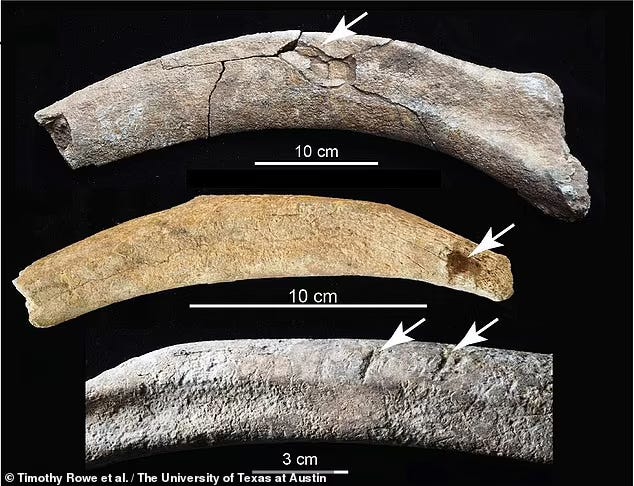The discovery of adult mammoth and her calf bones at a 37,000-year-old butchering site in New Mexico raises the possibility that humans first arrived in North America 17,000 years earlier than previously thought. Collagen was removed from the bones by a group of researchers led by The University of Texas in Austin, enabling carbon dating to establish the final age range of 36,250 to 38,900 years. The finding adds to the mounting evidence that cultures existed before humans crossed the Bering Strait land bridge some 20,000 years ago.
Previous investigations have uncovered artifacts and ancient human bones that date back 20,000 years, indicating that people lived in the region before Clovis—possibly those who crossed the land bridge sooner. In fact, before the mammoth bones were found it was a 20,000-year-old burial in Montana that was the oldest evidence of humans settling in North America, But now the oldest piece of evidence discovered so far is this set of mammoth bones.
According to Timothy Rowe, the study’s chief author, the early humans most likely migrated from Asia, although it is still unclear whether they traveled by land or water to reach the Americas. Additionally, Rowe’s backyard was where the find was made. When his next-door friend noticed a tusk sticking out of the ground, he immediately called in a team to assist with the excavations.
You can read the original journal publication below:

